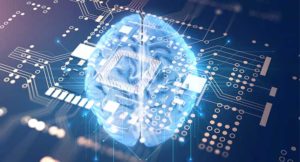How Is Cloud Computing Different from Traditional Computing?

If we talk about cloud computing then it is the most important pillar for any company or business organization. Without it, we cannot imagine the working of any Information technology or software-based company to function in the most efficient way. When we discuss the adoption of cloud services it is leaving behind in comparison to in-house facilities and cumbersome architecture. For additional information, there are companies that have set up their own data centres and traditional ecosystem but then also they have to rely on modern cloud computing solutions.
We can only understand the difference between cloud computing and traditional computing only by knowing the basics about both of them.
Define cloud computing?
Cloud computing is the modern form of computing where a large chunk of work is done from the remote workstation. In other words, it is the delivery of services according to the demand of the client. This means that the user doesn’t have to set up the architecture of the ecosystem in house. Prominent features like data storage, remote computing, off-grid processing, etc are the most lucrative features provided by the cloud computing infrastructure. And most importantly all of this is done without the direct activity of the user.
Define traditional computing?
Traditional computing is the system in which businesses or organizations own house data center facilities having a complete networking system altogether. In other words, it is the physical data centre in the premises that manages all the storage facilities, networking systems, staff and other miscellaneous activities to run properly. When it comes to performance and efficiency these traditional computing lags in front of modern cloud computing services. Most of the existing data centres that run on traditional infrastructure require a lot of human intervention and expenditure to keep the operations running and to ward off unknown security issues.
Now let’s check out the features and functionality that make cloud computing different from traditional computing.
Performance
In terms of performance, cloud computing wins the race with a great margin with the traditional form of computing. cloud computing is managed mostly by third-party service provides and it offers the latest technological innovations. But the latest technological additional are missed by traditional computing so a vast performance gap is seen between the two types of computing services. Features like cloud software development also add up to the performance of cloud services. Additionally, the expenses behind traditional computing are way more and serve a significantly lower rate of performance as well as productivity for businesses or any organization.
Flexibility
Being flexible according to the workload is one of the important features for being ahead in the competition. Here the word flexibility refers to the capacity of the working infrastructure to adapt according to the increased load of the work demanded in real-time. With the traditional set of computing the resources such as servers, data centre capacity, processing power, etc are limited to a certain extent. Whereas cloud computing key feature is its flexibility. Cloud computing has the capacity of storage flexibility and processing capability. The reason behind that a certain cloud computing is built to adapt to any challenging workload for catering the best services to their clients. According to the traffic or real-time workload, cloud computing can be augmented to give the optimal performance scaling up the capacity of the system. On the other hand, these features are absent in the traditional set of computing.
Maintenance cost
Maintenance cost is also an important factor and distinguish cloud computing from the traditional form of computing. The cost of input in cloud computing is massively low than traditional computing. Since in traditional computing the owner has to bear the investment cost of the technical infrastructure, electricity, rent, staff expenses, etc. Whereas in traditional computing one has to only pay for the services that it has used on a usage basis and all the responsibilities such as security, electricity, rent, staff expenses, etc are taken by the service provider.
Therefore for startups and small businesses cloud computing is far more superior to conventional computing. As a user don’t have to invest heavily in the data centres, servers, security, etc.
Automation
The contemporary form of technology or business prefers cloud computing rather than the traditional one. As cloud computing services are executed by the use of a sophisticated system of automation using modern AI and machine learning. But the traditional computing requires a significant amount of human intervention at multiple levels. All these features of conventional computing reflect a huge pressure on the human resource which is time and skill consuming.






